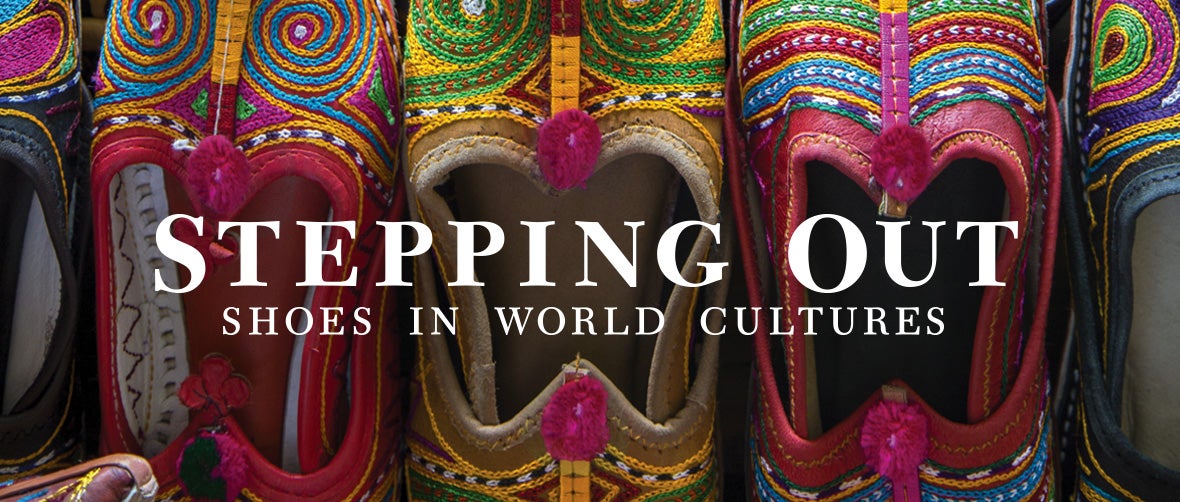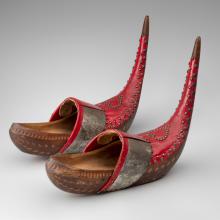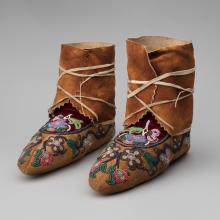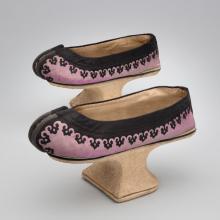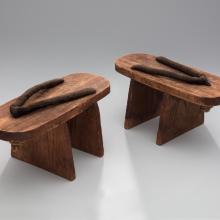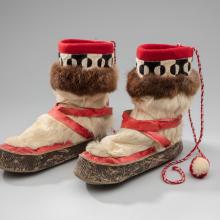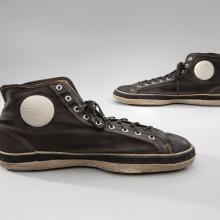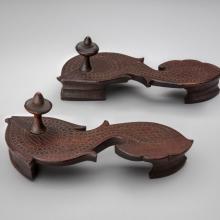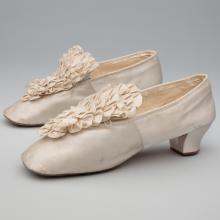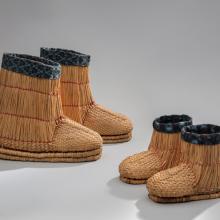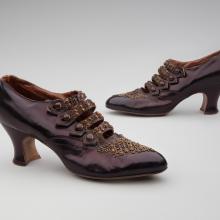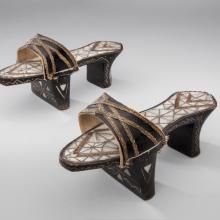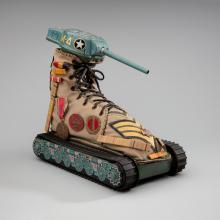Stepping Out: Shoes in World Cultures
Stepping Out: Shoes in World Cultures
Throughout world cultures, an incredible diversity exists among footwear. In the most utilitarian sense, shoes and sandals simply protect feet; hence, practical concerns have long driven shoe design. Indian padukas,or toe-knob sandals, elevate feet above the sun-scorched ground while offering protection from debris. In the Arctic regions, sheltering feet from the cold, harsh climate is paramount. Inuit women in parts of Canada and Alaska continue to craft boots from caribou and sealskins, which keep feet warm and dry.
Other shoes were fabricated for specific purposes, such as horseback riding. From the 1860s to 1890, cowboys on horseback drove cattle from Texas to the stockyards of Kansas. Cowboy boots were crafted specifically for their journeys. During the 1870s, athletic footwear began to be offered for sports and leisure activities, such as tennis. The invention of vulcanized rubber in the nineteenth century made these new, rubber-soled sneakers possible. By the early 1900s, sneakers were marketed for individual sports, particularly basketball, which was invented in 1891.
For centuries, elevated shoes with platforms, stilts, or heels served to keep one’s feet and clothing protected from dirt, water, and other unfavorable conditions. At the same time, elevated heel heights associated the wearer with wealth and prestige, while making them appear more seductive. Japanese geisha wore finely made, lacquered wood, high-platform geta, which required slow, short steps. In Turkey, special bathing clogs, called nalin, were made with elevated heels similar to Japanese geta and were worn by women in hammams, or baths. Though nalin varied in height, the highest ones did not provide better protection from wet floors; instead, they emphasized the wearer’s elevated status.
Decorative ornamentation appears on even the most pragmatic footwear. Elaborate embroidery, appliqué, and beading are some of the many techniques employed. Each of these embellishments accents a variety of Native American moccasins. As with shoe height, such adornment might signify a person’s prominent position in society. Decorative elements also serve symbolic purposes. Tigers, the most quintessential motif embroidered on young, Chinese boys’ shoes, are meant to frighten evil spirits and help children grow to be strong and fearless. Some decorative shoes are intended for festive occasions, such as weddings, when historically many Dutch and French villagers wore their most colorful, painted wooden clogs.
This exhibition features shoes from the nineteenth and twentieth centuries from a variety of countries and cultures. Western wedding shoes, early basketball sneakers, beaded moccasins, European clogs, Chinese children’s shoes, and Japanese geta are a few of the many types on display.
© 2017 by San Francisco Airport Commission. All rights reserved.
